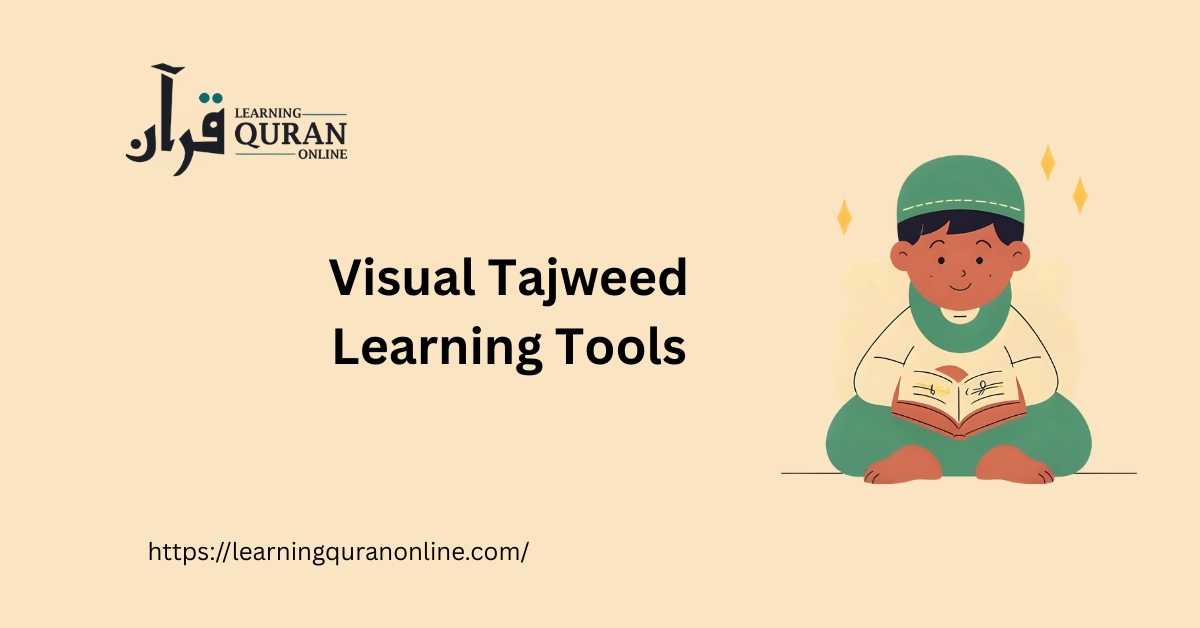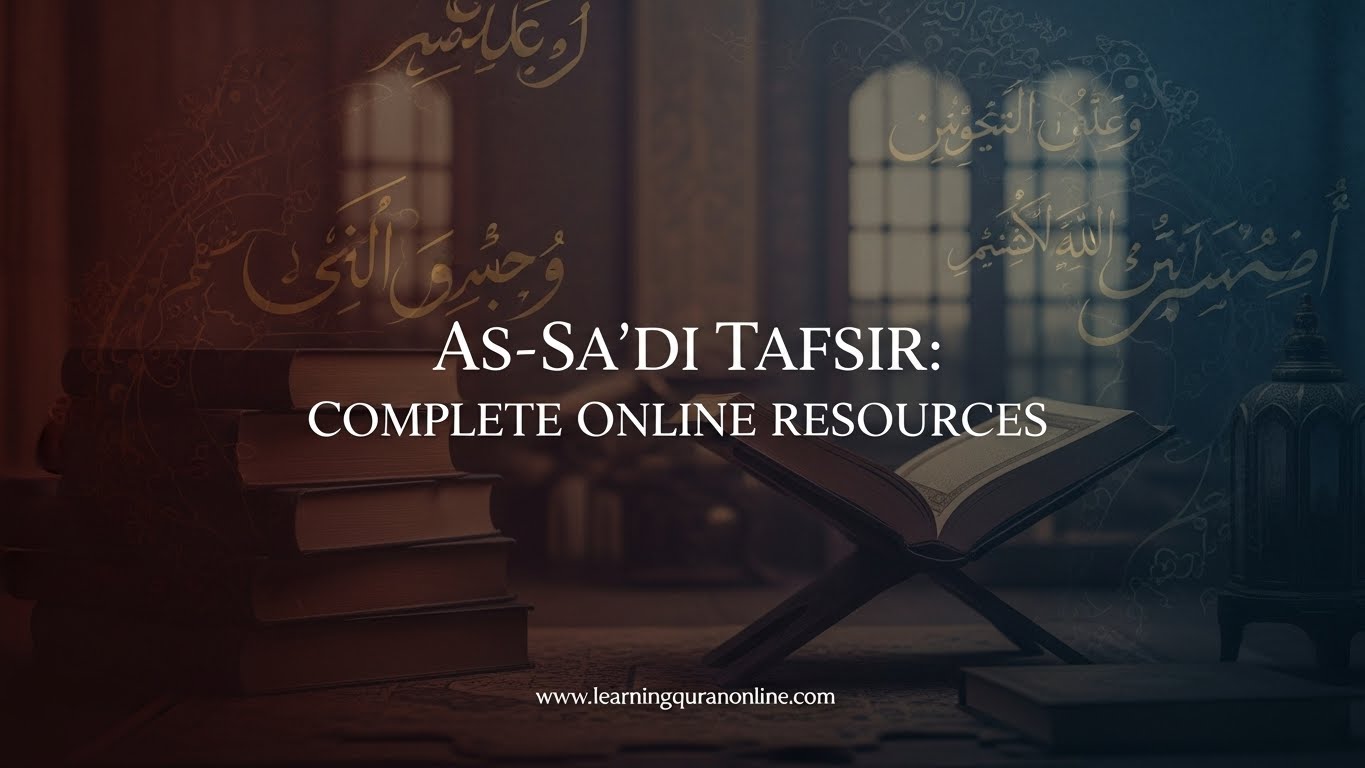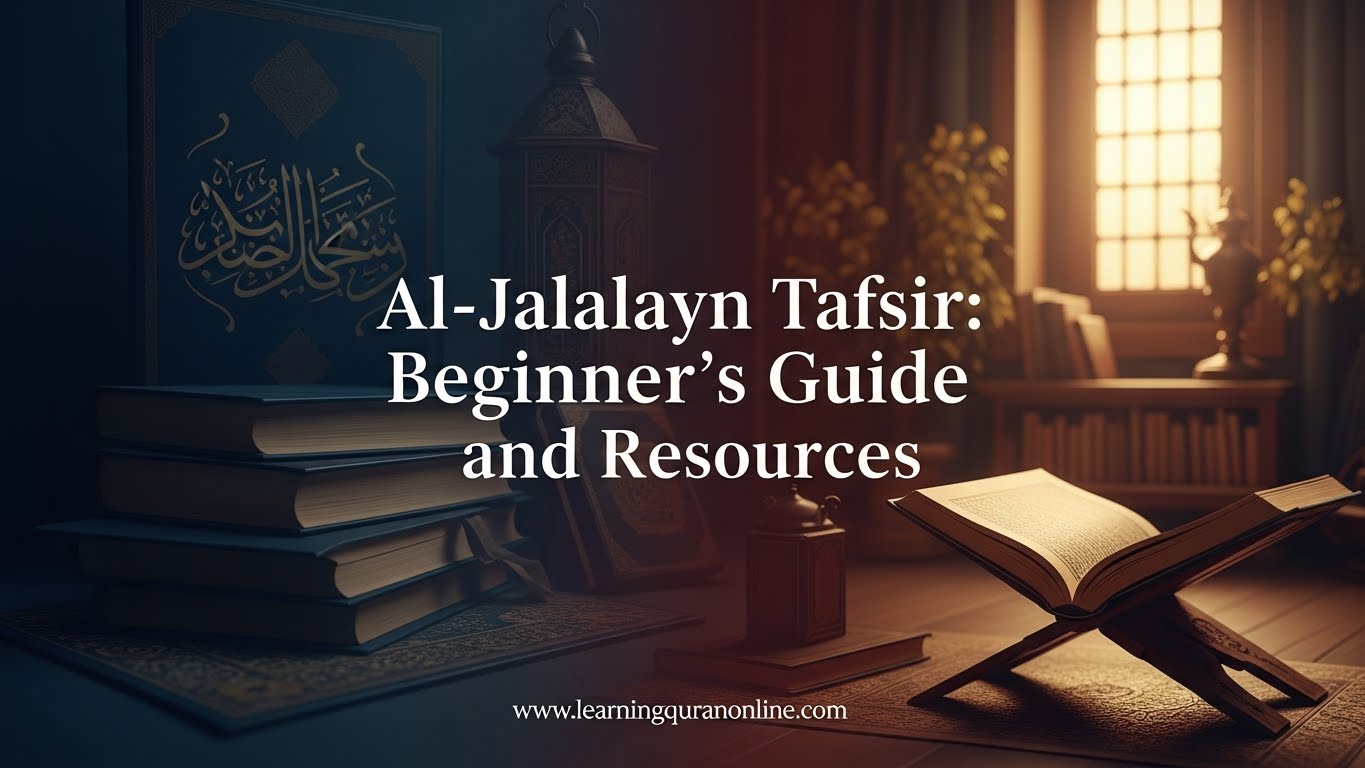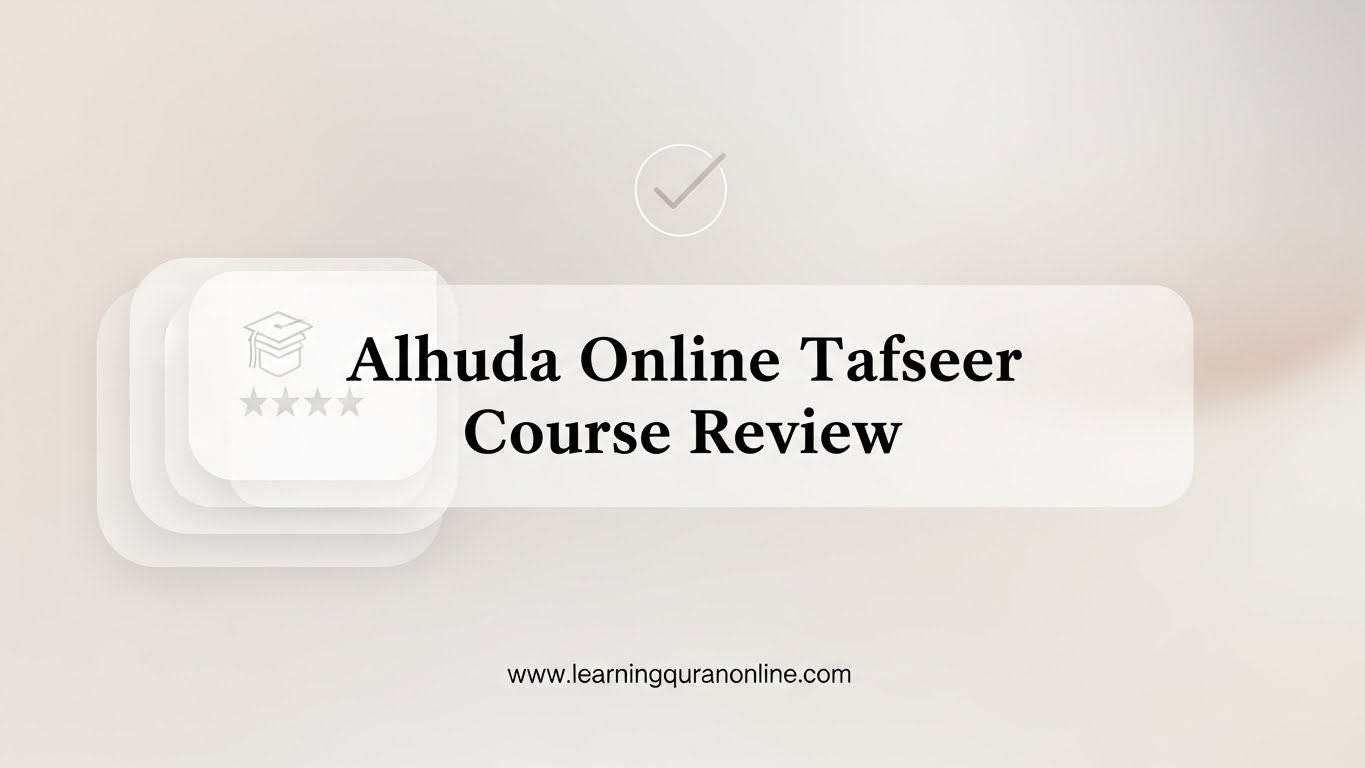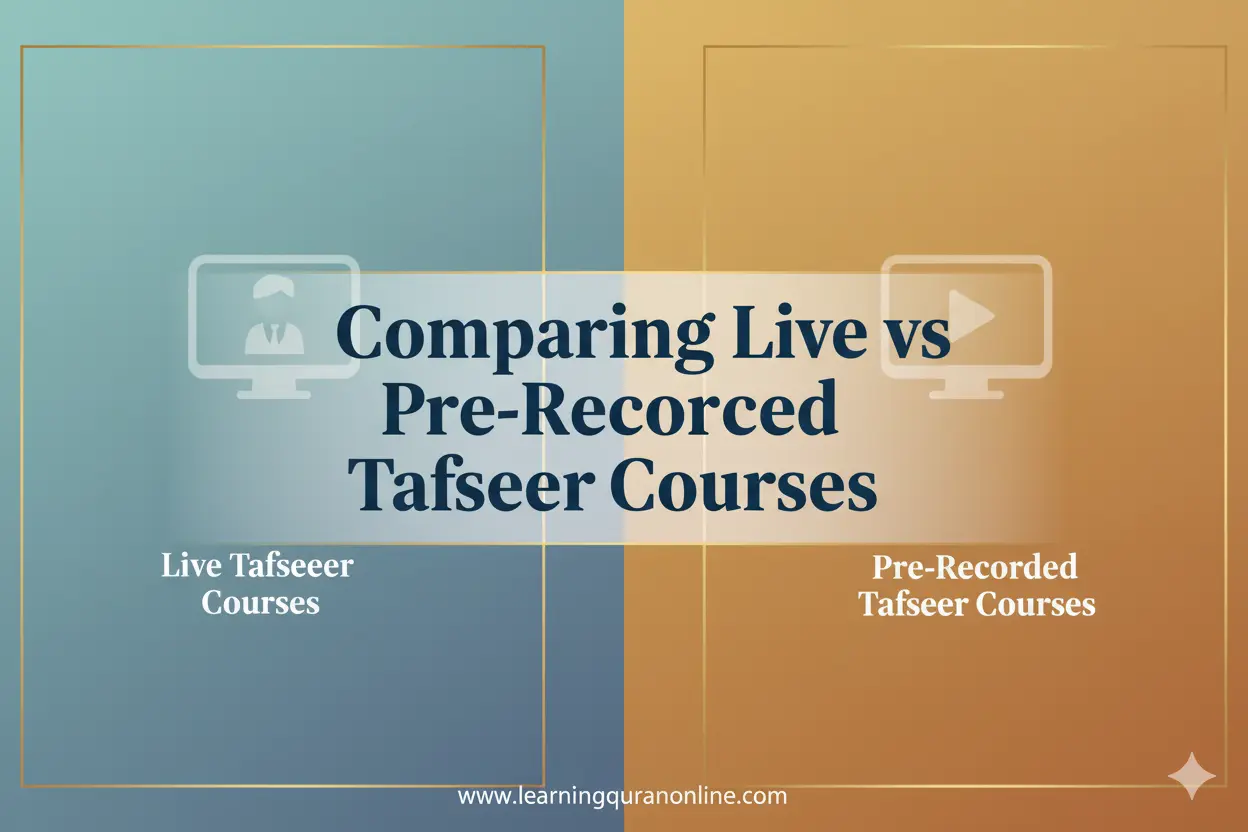Table of Contents
ToggleWhy Visual Learning Works for Tajweed
Visual learning complements listening and repetition. Seeing tajweed rules represented graphically helps learners form mental maps of rules, identify patterns, and self-correct. Visual cues reduce cognitive load by linking symbols, colors, and animations to pronunciation rules such as madd (elongation), ghunnah (nasalization), idgham (assimilation) and ikhfa (concealment). For beginners and visual learners, diagrams and animated demonstrations of makharij provide clarity that pure audio cannot.
Key advantages of visual tajweed learning:
- Immediate mapping of rules to text through color-coded markers.
- Animated articulation diagrams that show tongue and lip placement.
- Interactive feedback for independent practice and self-assessment.
- Consolidation of audio and visual channels—improves retention and fluency.
Essential Visual Tajweed Learning Tools
A range of digital and print visual tools are available to support tajweed learning. Below are the most effective categories and examples of how each one helps build correct Quranic recitation.
Color-coded Qurans and Text Overlays
Color-coded Qurans highlight tajweed rules directly on the mushaf. Each color corresponds to a specific rule (e.g., elongation, nasalization, silent letters). This direct mapping allows learners to:
- Identify rules at a glance while reading or listening.
- Practice targeted verses with visual prompts.
- Improve rule recognition in continuous recitation (tarteel).
Animated Makharij and Sifat Diagrams
Visual animations show where and how sounds are produced: tongue placement, airflow, teeth and lip position. These are invaluable for mastering letters that are easily confused (e.g., ظ vs ض, ق vs ك). Animations often include slow-motion and layered views to explain subtle articulatory differences.
Interactive Tajweed Apps and Software
Apps combine audio, visual cues, quizzes, and progress tracking. Features to look for:
- Real-time voice analysis and feedback.
- Waveform and pitch visualization for tajweed melody practice.
- Step-by-step video lessons and animated rule explanations.
- Gamified drills, flashcards, and spaced repetition for memorization.
Video Lessons and Animated Tutorials
High-quality video tutorials integrate on-screen text highlights, diagrams, and slow recitation. These lessons are useful for:
- Demonstrating contrasting pronunciations with close-ups.
- Breaking down recitation into manageable segments.
- Providing model recitations for learners to imitate.
Infographics, Charts, and Printable Worksheets
Visual charts synthesize rules in a compact format — ideal for classroom walls and revision sheets. Worksheets with color cues and fill-in exercises reinforce rule identification and application.
How to Use Visual Tajweed Tools Effectively
Visual tools are most effective when combined with structured practice and teacher guidance. Follow these practical steps:
- Start with Makharij and Sifat: Use animated diagrams to learn articulation points first, then match them with letters in the text.
- Pair Audio with Visuals: Always listen to correct recitation while following visual cues in the text to strengthen auditory-visual association.
- Practice in Short Sessions: Short, focused drills (10–20 minutes) with visual prompts yield better retention than long passive reading.
- Use Real-time Feedback: If available, use apps that offer voice analysis and corrective suggestions to build accuracy quickly.
- Track Progress: Use built-in progress trackers or a learning journal to note recurring mistakes and improvements over time.
- Blend Tools with a Teacher: Teachers can interpret visual tool data, provide nuanced corrections, and ensure correct tajweed application in context.
Benefits for Different Learners
Visual tajweed tools serve diverse learning needs:
- Beginners: Color cues and animated makharij simplify initial learning of harakat, sukun, and hamza.
- Children: Gamified apps and colorful text maintain engagement and make rules memorable.
- Non-native Arabic speakers: Visual phonetic maps and transliteration overlays clarify pronunciation challenges.
- Self-learners: Interactive tools enable structured independent study and continuous feedback.
- Teachers: Visual aids help explain complex rules quickly and serve as classroom materials and assignments.
Choosing the Right Visual Tajweed Tools
Not all tools are equal. When selecting visual tajweed resources, consider these criteria:
- Accuracy and Authenticity: Tools should be based on classical tajweed principles and validated by qualified teachers.
- Clarity of Visuals: High-quality animations and legible color schemes prevent confusion and reduce visual noise.
- Interactivity: Look for real-time feedback, quizzes, and voice analysis for active learning.
- Customization: Ability to slow down recitation, highlight specific rules, and focus on problem areas.
- Device Compatibility: Ensure the app or resource works on mobile, tablet, and desktop for flexible learning.
- Teacher Integration: Tools that allow teacher accounts, lesson assignment, or sharing of progress are ideal for guided courses.
Practical Tips for Teachers and Parents
Educators and caregivers can maximize results by combining visual tools with supportive teaching strategies:
- Introduce one visual rule at a time and give learners structured practice sessions.
- Use color-coded printouts for homework so students can continue visual learning offline.
- Encourage recording and playback so students can visually compare waveforms or pitch to model recitations.
- Hold short group sessions to discuss confusing rules using a shared screen with animations.
- Regularly review progress and adjust tool settings to match the learner’s pace.
Limitations and How to Overcome Them
Visual tools are powerful, but they do not replace the role of a qualified teacher. Potential limitations include over-reliance on colors without deep understanding, and technical issues with apps. Overcome these by:
- Balancing visual practice with supervised recitation sessions.
- Using visuals to reinforce, not to substitute, oral imitation and correction.
- Choosing tools with teacher approval and demonstrated accuracy in tajweed application.
Future Trends in Visual Tajweed Learning
Emerging technologies are making visual tajweed tools more immersive: augmented reality (AR) to project makharij animations in 3D, AI-driven pronunciation coaches that provide real-time waveform comparison, and adaptive learning systems that tailor lessons to a student’s error patterns. These advances will further close the gap between self-study and one-on-one instruction while preserving fidelity to classical tajweed methodology.
Conclusion
Visual tajweed learning tools are transforming how learners approach Quranic recitation. By combining color-coded text, animated articulation diagrams, interactive apps, and video tutorials, students can accelerate pronunciation mastery, internalize tajweed rules, and gain confidence in recitation. When chosen carefully and used alongside qualified instruction, these tools become invaluable assets for teachers, parents, and independent learners.
Whether you are a beginner learning harakat and makharij, a parent looking for child-friendly tajweed resources, or a teacher seeking effective classroom aids, integrating visual tajweed tools into your study plan will enhance clarity, retention, and recitation quality.

